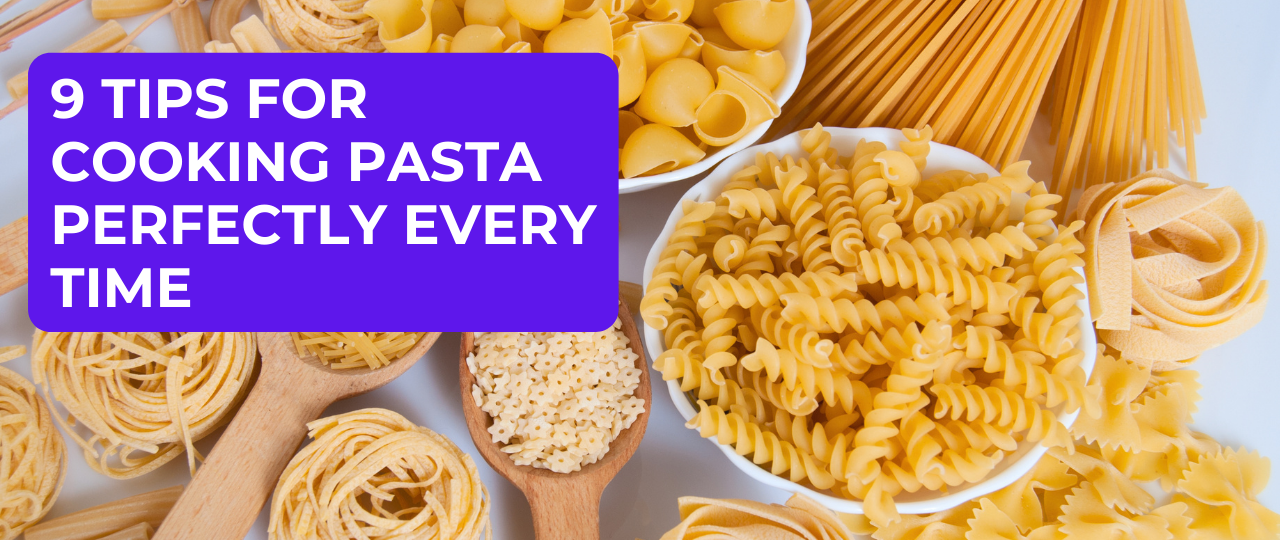Looking for pasta perfection? These 9 tips are all you need to know. And trust me, these tips the chef's kiss!
- Use a big, tall pot. Always cook pasta in a big enough pot, and one that is tall and deep rather than wide and shallow, especially for long strands. For one pound of pasta, use a pot that can hold at least 6 to 8 quarts of water.
- Lots of Water. Use plenty of water – the pasta should be able to swim freely in the pot. Fill the pot slightly more than three-quarters full with cold water (in general, cold tap water tastes better than hot tap water because warm water picks up more residue from the pipes).
- Plenty of Salt. Bring the water to a boil, then add salt – 2 tablespoons of salt for every gallon of water. Pasta water is salted after the water comes to a boil to prevent its taking on a slight metallic taste. Using sea salt also helps avoid this. Taste the water after you salt it – it should taste salty. Do not oil the water – this is just a waste of oil, and it also has the detrimental effect of creating a slick on the surface of the water, which does nothing for the pasta.
- Bring it back to a boil. Bring the salted water to a boil, add the pasta, stir immediately, and bring to a second full boil. You may need to cover the pot up to halfway to achieve the second full boil, but remove the cover as soon as the second boil is reached so the pasta doesn’t steam and become mushy. Pasta left cooking in slow-simmering water will become mushy and have a tendency to clump. Fresh pasta cooks in the time it takes to reach the second boil; don’t overcook it. Dried pasta takes longer, depending on thickness and shape.
- Don’t Rinse It. Never rinse pasta after cooking unless you are using the pasta for a cold salad. The starch left on the surface of the pasta contributes flavor and helps the sauce to adhere. Just drain in a sturdy colander and toss with a little extra-virgin olive oil if you are not using right away. More delicate pastas such as ravioli or lasagna should be lifted from the water with a large, flat strainer so that the pasta doesn’t tear.
- Save the cooking liquid. Always reserve at least half a cup of cooking water. I recommend dipping a measuring cup in the water before dumping it, I usually save up to 2 cups (just in case!). The pasta water both loosens the sauce so it can coat the pasta and contributes starch that helps the sauce cling better. If your sauce is too thick, you can also use the reserved water to thin it out.
- Make it al dente. Start testing the pasta a minute or two before the time indicated on the package to make sure it doesn’t overcook. The pasta should still offer definite resistance when you bite it but not be pasty white or hard inside. Don’t throw it at the wall, that only makes a mess.
- Toss it with hot sauce. Remember that your pasta will continue to cook when you add it to the hot sauce and toss them together, so don’t leave it in the pan any longer than necessary to marry the pasta and sauce together and warm them both through.
- Serve it with salad! Part of the reason pasta gets such a bad rap in the US is that we can’t resist hefty portions. It pays to take a hint from the Italian playbook and eat a course of salad and or vegetables before you get to the pasta, and perhaps a meat, fish, or small dessert afterwards, so you have something to save room for. A cup of cooked pasta is plenty per person. One pound of pasta serves 4 as a main course or 6 as a first course.














